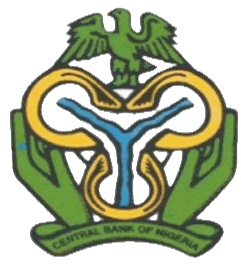Please use this identifier to cite or link to this item:
https://library.cbn.gov.ng:8443/jspui/handle/123456789/483Full metadata record
| DC Field | Value | Language |
|---|---|---|
| dc.contributor.author | Mohammed, S. | - |
| dc.date.accessioned | 2018-10-24T08:48:31Z | - |
| dc.date.available | 2018-10-24T08:48:31Z | - |
| dc.date.issued | 1995-12 | - |
| dc.identifier.citation | Mohammed, S. (1995). Manpower training and development for efficient central banking: the CBN experience. Economic and Financial Review, 33(4), 438-448. | en_US |
| dc.identifier.issn | 1957 - 2968 | - |
| dc.identifier.uri | http://library.cbn.gov.ng:8092/jspui/handle/123456789/483 | - |
| dc.description.abstract | The scope of training and manpower development as a management function is very wide indeed and, while the cost involved is extremely high, very little is known about the pay-offs. Training and manpower development are not an end in themselves. Rather, they provide the necessary opportunity for employees to sharpen their skills and acquire knowledge and experience, which they can apply in the execution of their jobs. For example, if you manage by objectives, as you should do, you will have specific goals to accomplish. However, you may not know how to plan effectively, how to organise, how to establish a suitable control system or even what your duties are. These skills and knowledge gaps can be filled by planned training and manpower development activities. If these issues are internalised effectively and efficiently, then the productivity of the programme-training and manpower development has proved its value. At the organisational level too, the so-called organic or healthy body corporate is an that organisation is able to adapt to changes in its external environment through continuous restructuring and renewal of its internal sub-systems. Since the human resource sub-system is the prime mover of all corporate activities, its planned and purposeful cultivation through training and development, will make a the difference to the capacity of the organisation to innovate, face future challenges with confidence and to not only survive but also maintain that vital competitive edge. Even though the Central Bank of Nigeria is not in competition with any financial institution, its survival and growth needs are not different. Accordingly, training, re-training and continuing development form the bedrock of the Bank's human resource management philosophy. With this brief introduction, the focus of the rest of the paper will be on the definition of key concepts, evolution of manpower training and development in the Central Bank of Nigeria: the process of formulating and implementing the annual training plan, and how we monitor and evaluate manpower training and development. The paper ends with summary and conclusion. | en_US |
| dc.description.sponsorship | Central Bank of Nigeria | en_US |
| dc.language.iso | en | en_US |
| dc.publisher | Research Department, Central Bank of Nigeria. | en_US |
| dc.relation.ispartofseries | Vol. 33;No. 4 | - |
| dc.subject | Human resource management, | en_US |
| dc.subject | Training and development, | en_US |
| dc.subject | Central Bank of Nigeria, | en_US |
| dc.subject | Education. | en_US |
| dc.title | Manpower training and development for efficient central banking: the CBN experience. | en_US |
| dc.type | Article | en_US |
| Appears in Collections: | Economic and Financial Review | |
Files in This Item:
| File | Description | Size | Format | |
|---|---|---|---|---|
| Manpower training and development for efficient central banking.pdf | 1.41 MB | Adobe PDF |  View/Open |
Items in DSpace are protected by copyright, with all rights reserved, unless otherwise indicated.
Admin Tools
